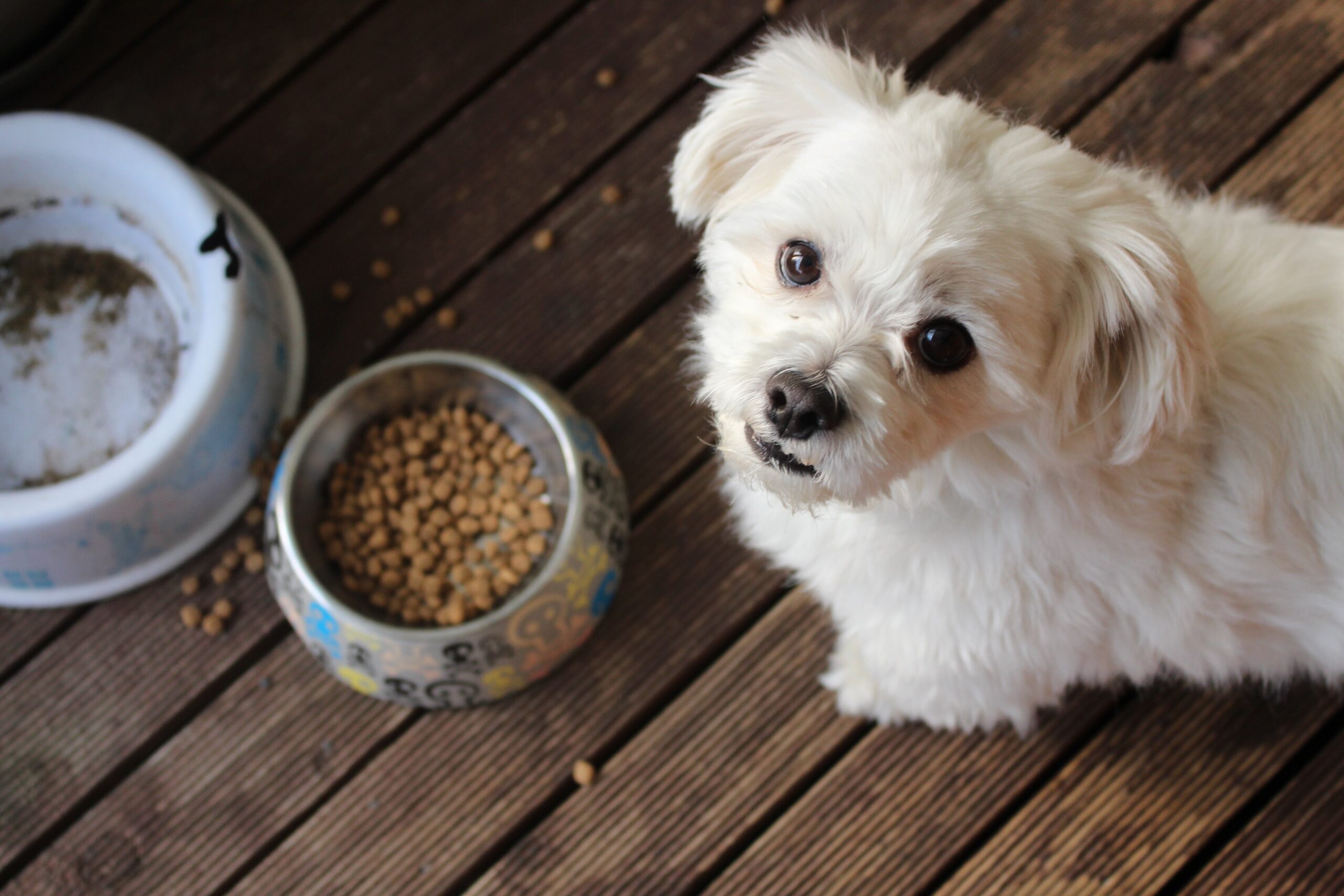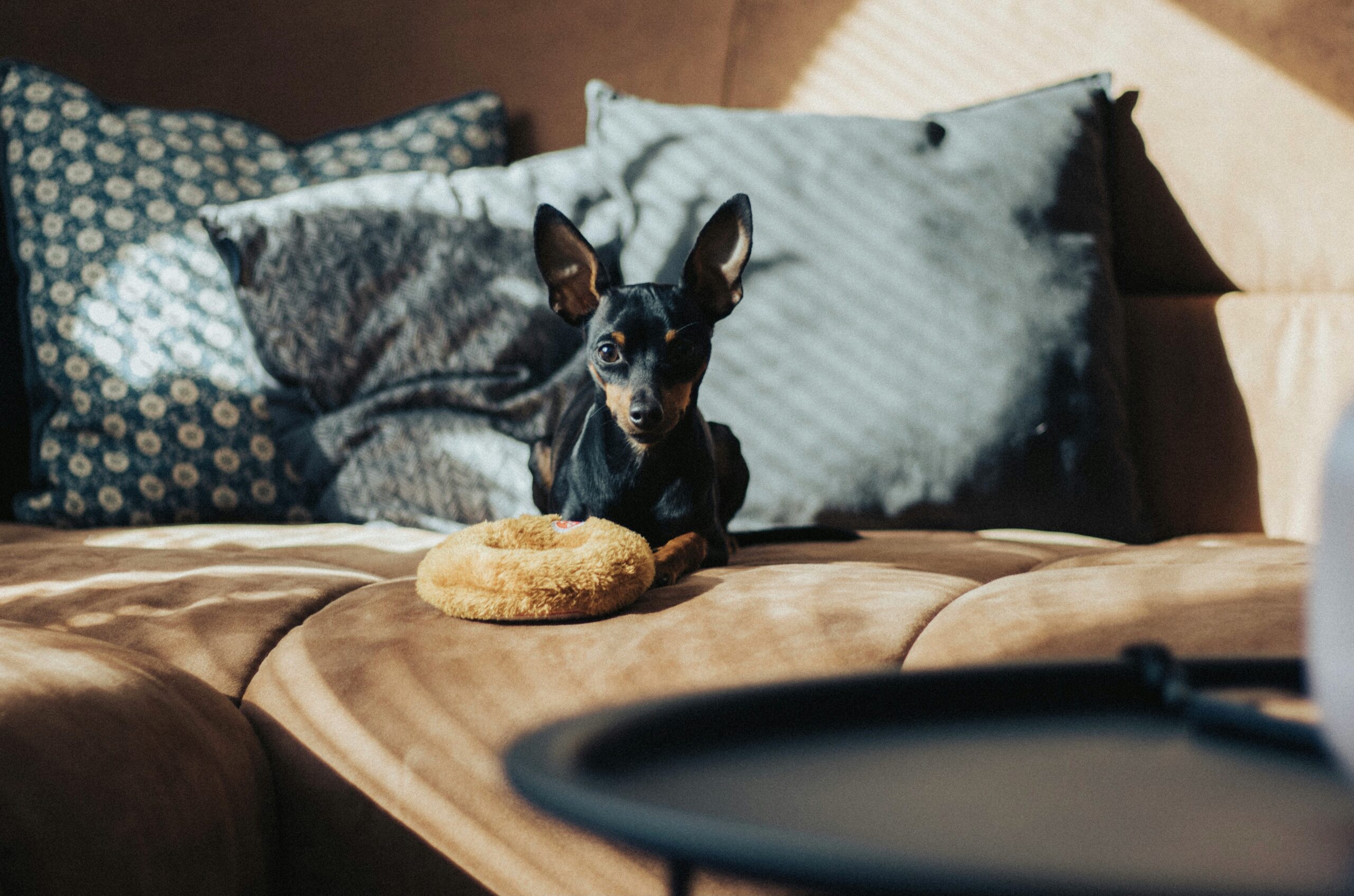As caring and responsible pet owners, we often wrestle with the question of which foods are safe for our dogs to consume. A common query that arises in this context is “can dogs eat bread?“. From sandwich crumbs to half-eaten bagels, dogs seem to love the taste of bread, which could lead us to wrongly assume it’s as good for them as it is for us. But what are the effects of bread on dogs?
The prevalence of this question underlines an ongoing debate about the suitability of human food in a dog’s diet. There is an undeniable temptation to share our meals with our furry friends, especially when they use their best ‘puppy eyes’ tactics. However, it’s a decision that should not be made lightly, considering its potential consequences on their health and wellbeing.
Understanding what your dog can and cannot consume is a fundamental responsibility for any dog owner. With bread being a staple in many households, its safety as a treat or meal supplement for dogs inevitably becomes a practical concern. Hence, it’s high time to explore this topic in detail, to ensure the nutrition decisions we make for our dogs are informed, safe, and beneficial.

Table of Contents
The Nutritional Context Impacts Effects of Bread on Dogs
The Composition of Bread
Bread, a common item in our diet, mainly comprises carbohydrates, with minor traces of protein and varying amounts of fiber, depending on the kind of bread. These nutrients are vital for humans, but when it comes to canines eating bread, their nutritional needs are slightly different.
Most bread types are high in sugar content and refined grains. While there are healthier variants like whole grain, these contain complex carbohydrates which, though beneficial for humans, can be harder for dogs to digest. A typical dog diet requirement, in contrast, heavily leans towards protein and to some extent, fat.
Yeast
Yeast, widely recognized as an essential component in bread making, poses certain risks to dogs when consumed in significant amounts. This common kitchen ingredient, while harmless in small quantities, can become a health hazard for canines if ingested excessively. The primary concern is that yeast can cause bloating in dogs, a condition where the stomach fills with gas. This bloating is not just uncomfortable but can escalate into a more severe and potentially life-threatening situation known as gastric dilatation-volvulus (GDV). GDV occurs when the bloated stomach twists on itself, leading to a rapid onset of clinical signs including pain, vomiting, and rapid heart rate. If not treated promptly, this condition can be fatal. Therefore, it’s crucial for dog owners to understand the dangers yeast can present and to ensure that their pets do not have access to foods containing large amounts of this ingredient. Awareness and caution are key in preventing such health issues in our beloved canine companions.
The place of bread in a dog’s diet
Moving onto the place of bread in a dog’s diet, one must qualify that it’s not inherently toxic for them. Thus, feeding bread to pets occasionally might seem harmless. However, it doesn’t mean that bread should become a regular part of their diet, especially considering it isn’t a natural food for dogs.
Like in the human diet, the type of bread matters too. Plain, unsweetened breads are safer for dogs, while flavored variants like garlic or raisin bread are harmful due to the toxic ingredients they contain. Furthermore, dogs and bread diets don’t necessarily mix well given the high carb load, which can lead to obesity if not correctly managed.

Implications for Regular Consumption
The discussion now veers towards the regular consumption of bread by dogs. Like any other food, moderation is key. Bread, despite not being inherently harmful to dogs, can contribute to weight gain and associated health issues due to its high-calorie content and carbohydrate composition.
It’s not rare to find real-life reports of dogs consuming bread without immediate ill effects. However, incidents of bread dough ingestion leading to serious health issues also exist. Raw dough, if eaten, can rise in a dog’s stomach, causing bloating, which can be an emergency.
In conclusion, while bread is essentially safe for dogs, it is wise to treat it more as an occasional treat and not a dietary staple, to avoid potential health pitfalls. Always remember, a balanced, canine-friendly diet is pivotal for your pet’s overall wellbeing.
Health Implications & Risks Tied Effects of Bread on Dogs
Understanding Potential Physical Reactions
Now, shifting our focus to the physical reactions of dogs consuming bread, it’s important to note that these vary from one pet to another. The immediate physical reactions may range from no noticeable changes to digestive issues such as bloating or diarrhea, especially if the dog is not used to eating bread or has a sensitive stomach.
However, there are less common, but potentially serious, physical reactions too. As mentioned earlier, the ingestion of raw dough can be particularly harmful. It can ferment in the dog’s stomach, producing alcohol that can lead to alcohol toxicity. Furthermore, yeast dough can rise and cause painful gastric dilatation and even life-threatening volvulus.
Lingering Health Effects of Bread on Dogs
While the health implications of canines eating bread are not usually immediate, regular consumption can lead to chronic issues. The high carbohydrate and caloric content of bread can contribute to weight gain and obesity, leading to a host of associated problems like diabetes or joint health degradation.
Moreover, debunking one common misconception, bread is not useful for a dog’s digestion or as a stomach-settler during diarrhea. Contrary to this belief, in some dogs, bread can further contribute to gastrointestinal disturbances. It’s best to follow a vet-approved diet during such times.

Role of Bread in Certain Health Conditions
Coming to how bread can influence existing health conditions in dogs, one has to tread cautiously. For instance, for a diabetic dog, feeding bread can lead to spikes in blood sugar levels. On the other hand, dogs with kidney problems may struggle with the high protein content in specialty breads.
Case studies confirm these risks. A proven instance is Pancreatitis, a condition that gets worse by high-fat diets. Bread, especially if served with butter or spreads, can contribute to exacerbating the symptoms of this condition. Similarly, frequent bread consumption was noted in several cases of canine obesity, underlining the need for moderation and control in their diet.
In conclusion, while dropping a piece of bread for your dog to wolf down might seem a harmless indulgence, constant repetition can lead to health implications over time. It is pivotal to remember that not all human foods are suitable for dogs, and bread is no exception.
Best Practices for Feeding Dogs Bread
When and How Much Bread to Feed
Given the potential health implications touched upon, one might wonder “Is bread safe for dogs?” – it’s a legitimate question. The answer is, yes, but in moderation and infrequently. While feeding bread to pets might be a treat they love, consider it as an occasional indulgence, rather than a dietary staple.
The quantity of bread for dogs should be limited too. A small slice or two is often enough for a large dog, while puppies or smaller breeds should receive only a few bites. Remember, bread is high in calories and lacks the requisite nutrients in a balanced dog food. Overfeeding can lead to health consequences, so keep portion sizes small.
Monitoring for Adverse Effects of Bread on Dogs
As responsible dog owners, monitoring your pet after they consume bread is paramount. Any change in behavior, digestion, or energy levels should be closely observed. Symptoms to look out for include bloating, heavy panting, restlessness, and vomiting. If your dog exhibits any of these signs, stop feeding them bread and seek veterinary consultation.
More grave symptoms like walking drunk, sudden isolation, or extreme lethargy could be signs of bread dough ingestion or other food-related toxicities. If these symptoms are observed, reach out to your vet immediately.
Consultation with Vet Professionals
Before making any significant changes in your dog’s diet or if concerns arise about your dogs and bread diet, a consultation with a vet professional is highly recommended. Your vet is the best guide to your fur-baby’s nutritional needs, and they would provide guidance based on health conditions, age, breed, and lifestyle of your dog.
While discussing your dog’s eating habits with your vet, be transparent about what you’re feeding them, including how often you’re feeding them bread. Take your vet’s advice seriously, and adjust your dog’s diet accordingly. A dialogue with your vet will ensure that your pet’s nutritional needs are being met while reducing the risk of potential health problems.
Is bread bad for dogs? Not inherently. But moderation, observation, and consultation with your vet are essential strategies when it comes to feeding bread to your pets. Keep these best practices in mind to ensure your pet’s health and happiness.
Wrapping it Up: Responsible Feeding is Key
In this exploration of dogs and bread diets, we grappled with nuanced considerations, debatable aspects, and clinical facts about dogs consuming bread. From looking at the nutritional context of bread in a dog’s diet to understanding potential health implications and best practices, one key takeaway persists – moderation is crucial when feeding bread to dogs.
While bread is not inherently harmful to dogs, it doesn’t bring significant nutritional value to their diet either. A protein-centric diet that is traditional for canines is still the best course to follow for their optimal health. If you choose to feed them with bread, do so infrequently and sparely, and monitor them closely for any adverse reactions.
Both immediate and long-term health implications of dogs eating bread were considered, from minor gastrointestinal upsets to serious issues like bloating from raw dough ingestion, obesity, and exacerbation of existing health conditions. Canine owners need to be wary of these potential risks while deciding on whether to include bread in their pet’s diet.
Finally, consultation with a vet professional is non-negotiable. Their advice can guide you about the suitability of bread for your pet based on breed, age, lifestyle, and existing health conditions. A close partnership with your vet is necessary to ensure the wellbeing of your pet, especially when incorporating human food into their diet.
The onus is on us, the pet owners, to adapt responsible and informed feeding behaviors. Fundamental to this responsibility is the realization that our food is not always their food. Ensuring we feed our dogs safe foods and maintain a balanced diet for them is pivotal – because, at the end of the day, our pets’ health matters as much as ours does. Remember, their wellbeing depends on us, let’s not let them down.




